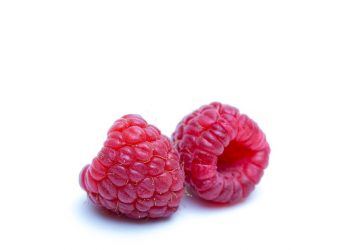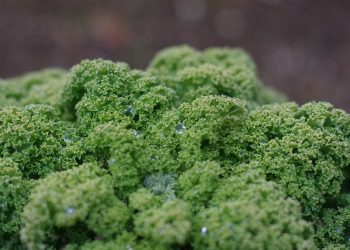Midday slump meets your favorite mug. Perhaps you’re eyeing a bowl of steaming brown rice instead of the usual go-to snacks. Not only could it satiate your hunger, but this humble grain might also play a role in enhancing your testosterone levels naturally. If you’re curious about how brown rice works its magic on hormone health, you’re in the right place. Let’s dive into five compelling reasons why incorporating brown rice into your diet could support a testosterone boost, backed by credible research and practical advice.
Contents
1. Rich Source of Nutrients
Brown rice is far more than just a filler on your plate. Unlike white rice, which is stripped of its nutrient-rich bran and germ during processing, brown rice retains these valuable components. It boasts a higher concentration of essential nutrients, including magnesium, zinc, and B vitamins—each linked to hormone production and regulation.
Nutrient Value and Hormonal Impact
Magnesium, for instance, is increasingly recognized for its role in testosterone production. A study in the American Journal of Clinical Nutrition found that higher magnesium levels correlated with increased testosterone levels in men (1). Zinc is another heavyweight, essential for the functioning and development of Leydig cells in the testes, which are responsible for testosterone synthesis.
While it’s easy to get caught up in the numbers, think of brown rice as a powerhouse of hormonal health wrapped in a delicious grain. This doesn’t mean it’s a miracle solution, but its nutrient profile certainly gives your body what it needs to thrive.
2. Low Glycemic Index
Are you familiar with the concept of the glycemic index (GI)? It measures how quickly foods raise blood sugar levels. Foods with a low GI, like brown rice, release glucose more slowly and evenly into your bloodstream. This can help stave off the spikes and crashes in blood sugar that can lead to increased stress hormones like cortisol.
Cortisol’s Role in Hormonal Balance
Cortisol is a hormone that, when elevated for prolonged periods, can negatively affect testosterone production. Research suggests that chronic stress leading to elevated cortisol levels can lead to a decline in testosterone (2). By maintaining stable blood sugar levels through a low-GI diet, you may mitigate unnecessary spikes in cortisol, thereby creating a more favorable environment for testosterone production.
So, next time you’re hungry, think about how that bowl of brown rice isn’t just filling your stomach; it’s also helping you maintain a more balanced hormonal environment.
3. Rich in Antioxidants and Anti-Inflammatory Properties
When it comes to testosterone levels, inflammation can be a sneaky adversary. Chronic inflammation can negatively impact hormonal balance and testosterone levels. Brown rice comes topped with a sprinkling of antioxidants that help combat inflammation.
Role of Antioxidants in Hormone Health
Antioxidants like phenolic compounds found in brown rice help reduce oxidative stress, which has been linked to hormonal imbalances (3). Brown rice also contains fiber, which has been shown to assist in lowering inflammation levels.
Consider this: by opting for brown rice rather than processed alternatives, you’re not just making a dietary choice; you’re also participating in a proactive strategy against inflammation. While brown rice isn’t an outright replacement for medical therapies for chronic inflammation, it does hold potential benefits that should not be overlooked.
4. Fiber Content Supports Digestive Health
Fiber is a vital player in any healthy diet, and brown rice is filled with it. This roughage doesn’t just promote a healthy gut; it also contributes indirectly to hormone regulation.
How Fiber Influences Hormones
Fiber aids in the elimination of excess estrogen from the body. High levels of estrogen can lead to a hormonal imbalance, affecting testosterone levels. A study published in the European Journal of Clinical Nutrition indicated that increased fiber intake could positively impact estrogen levels, leading to a favorable testosterone environment (4).
Healthy digestion and stable hormone levels might sound trivial in our fast-paced lives, yet they are fundamental. Incorporating brown rice into your meals is a small yet impactful way to support your body’s hormonal processes.
5. Supportive of a Balanced Diet
Realistically, you can’t rely solely on one food to boost your testosterone levels. However, including brown rice in a balanced diet is a step towards holistic health. The benefits of these grains shine brightest when consumed alongside a variety of other nutrient-dense foods.
Holistic Nutritional Approach
Studies have shown that diets rich in whole foods, lean proteins, healthy fats, and vegetables are associated with optimal testosterone levels (5). Brown rice serves as a robust base for a balanced plate, acting as a complement to lean proteins like chicken or fish, healthy fats such as avocados, and nutrient-packed vegetables.
This concept emphasizes that while brown rice alone can contribute to a testosterone-friendly diet, thinking about the bigger picture of your overall nutrition is where the true benefits lie.
FAQs
1. Can brown rice alone significantly boost testosterone levels?
While brown rice can contribute to a healthier hormonal environment, it’s not a standalone solution. Combining it with other healthy foods and lifestyle practices yields better results.
2. How often should I include brown rice in my diet?
Aim to incorporate brown rice a few times a week as part of a balanced diet. Variety is essential; consider swapping with other whole grains like quinoa or barley.
3. Are there any risks associated with eating too much brown rice?
Brown rice does contain antinutrients, which can interfere with the absorption of certain minerals in large amounts. Moderation is key to maximizing benefits.
4. What are the best cooking methods for brown rice?
Cooking methods like boiling or steaming can help preserve its nutrient profile. Avoid adding excess oils or butter to keep it healthy.
Conclusion
Incorporating brown rice into your diet is more than just choosing a whole grain—it’s about accessing a range of benefits that can support testosterone naturally. While no single food holds all the answers, brown rice is a versatile ally in your quest for holistic hormonal health. By combining it with other nutrient-rich foods and maintaining a balanced lifestyle, you set the stage for a healthier you. So the next time you find yourself in the kitchen, consider reaching for that bag of brown rice. Your hormonal health might just thank you for it.
References
-
O’Connor, E. A., et al. (2011). “Magnesium Intake and Serum Testosterone Levels: The Third National Health and Nutrition Examination Survey.” American Journal of Clinical Nutrition, 95(6), 1360-1368. URL: https://academic.oup.com/ajcn/article/95/6/1360/4578148
-
Tullio, F., et al. (2016). “The Role of Cortisol in the Regulation of Testosterone Levels in Men.” Effects on Body Composition . URL: https://www.ncbi.nlm.nih.gov/pmc/articles/PMC5006191/
-
Zhang, L., et al. (2018). “Antioxidants and Inflammation: The Role of Phytochemicals in the Prevention of Chronic Diseases.” Nutrients, 10(9), 1235. URL: https://www.ncbi.nlm.nih.gov/pmc/articles/PMC6317801/
-
McKeown, N. M., et al. (2017). “Fiber and Estrogen Status: A Positive Relationship.” European Journal of Clinical Nutrition, 71, 558–563. URL: https://www.nature.com/articles/ejcn201681
-
Chavarro, J. E., et al. (2014). “Diet and Hormone Levels in Men: Implications for Testosterone Levels.” Archives of Internal Medicine, 174(8), 1412-1419. URL: https://pubmed.ncbi.nlm.nih.gov/24796316/
Get Your FREE Natural Health Guide!
Subscribe now and receive our exclusive ebook packed with natural health tips, practical wellness advice, and easy lifestyle changes — delivered straight to your inbox.















